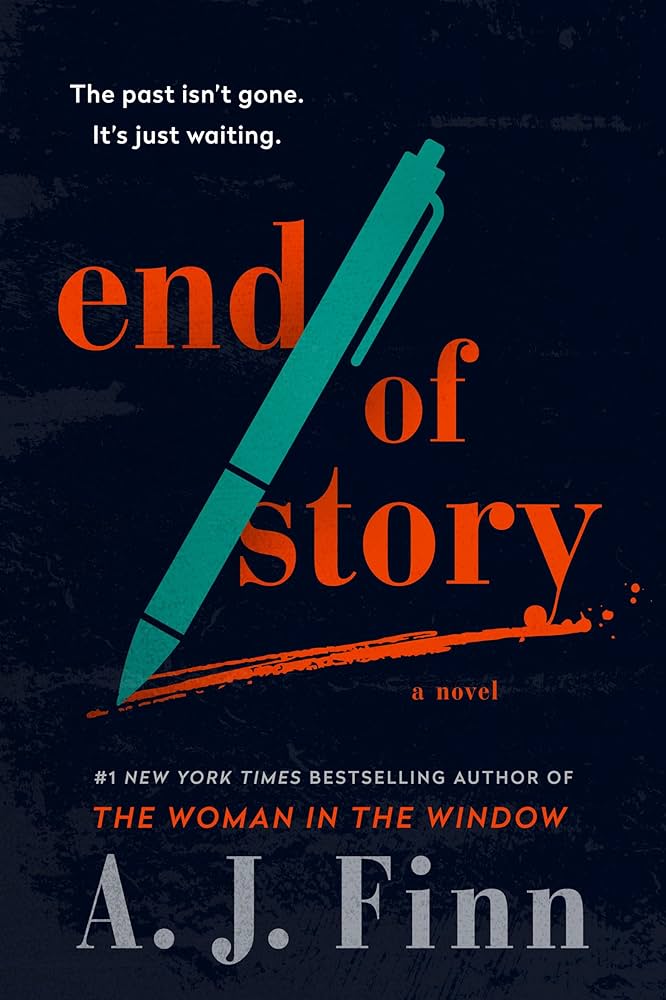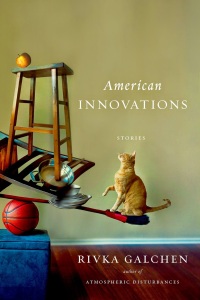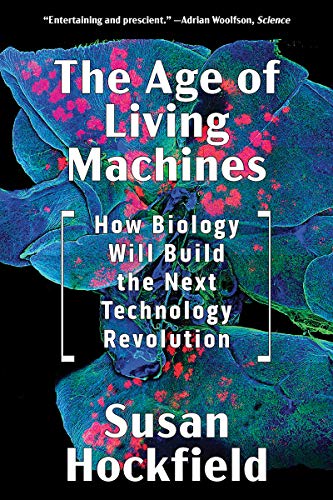
Library Journal listed End of Story as one of the “big books this week” (2/20/24).
A.J. Finn is known for his remarkable The Woman in the Window.

Readers who like stories about odd characters who find themselves in strange situations, will love this new collection by Rivka Galchen.
As strange as the characters are, though, it’s easy to relate to them.Who hasn’t felt what this character in “The Lost Order” feels so keenly?

“But one day I woke up and heard myself saying, I am a fork being used to eat cereal. I am not a spoon. I am a fork. And I can’t help people eat cereal any longer.”
After a strange caller angrily denounces her for a missing Chinese take-out order, the narrator of “The Lost Order,” comes to some startling conclusions about her marriage and herself.
“The Region of Unlikeness,” is about another lost soul who befriends two eccentric intellectuals at a coffee shop. She is secretly attracted to one of them and repelled by the other.
“American Innovations” bravely tackles magical realism, body image, and deformity.
“Wild Berry Blue,” is a wonderful coming-of-age story about a girl who has a crush on an ex-junkie who works at her favorite McDonalds.
In one story, “Once Upon an Empire,” a likable but possibly deranged narrator, loses all of her belongings. No one steals them; instead, in a magical realism way, they become mobile and literally walk away from her apartment.
She finds them in a dumpster but is reluctant to identify them to the police.
Less successful stories included in this collection are “Dean of the Arts” or “The Late Novels of Gene Hackman.”
Galchen’s collection was long-listed for the 2014 Scotiabank Giller Prize.

Set in New York, My Name is Lucy Barton, is a psychological portrait of a woman who has survived a terrible upbringing of cruelty and poverty. At the start of the novel, Lucy, who is temporarily hospitalized, received visits from her mother. Lucy is grateful for the visits and grateful for the doctor who seems to genuinely care for her.
Underneath the mother’s kindness, however, there is an undercurrent of cruelty. Lucy is the only one who has successful escaped her humble beginnings in Amgash, IL.
Lucy has gone to college and become a writer but she still experiences loneliness and disconnection. Once after Lucy has her first baby, she calls her mother. Her mother, however, refuses to accept the charges for the collect phone call.
This novel is set in the 1980s before cell phones and smart phones. Another crucial part of the novel is the AIDS epidemic; Lucy feels a connection with outcasts and with the neighbor who is dying.
The brothers and sisters she left behind in Amgash feel some resentment for Lucy, who made it out of the rural community. Those themes are explored in Strout’s award-winning short story collection, Anything is Possible.
Lucy discovers she will always be connected to her family even though she has left them and started life anew elsewhere.

Spineless is a fascinating memoir about a woman obsessed with jellyfish. Berwald became enamored with the marine life after taking a course in Israel. Once she explored the Red Sea coral, Berwald was hooked. After having children, though, Berwald felt sidelined by her options.
Though she faced many obstacles, Berwald’s slippery subject takes her to Italy, Japan, and Israel. In a journey that mirrors the life cycle of the jellyfish, Berwald’s becomes enthralled with the jellyfish’s story–their anatomy, their ability to reproduce in increasingly acidic waters and what that portends about the ocean’s future.

The premise of Every Heart a Doorway is that the universe extends an invitation to certain children: a door to a new world. This new world, whether it be called Confection, or Prism, or Halls of the Dead is a magical place where the individual feels completely at home.
Some of these children are never seen again. Others are for whatever reason forced or told to return to real world for a short time. These children who have made this magical journey are heart-broken when they find themselves back in the real world
All of the students that end up at Eleanor West’s School for Wayward Children want desperately to find the door and the world that claimed them.
Eleanor tells the parents of these children that she will offer group therapy and that she will shatter their delusions. Eleanor actually sees her school as a “way station.” She wants nothing more than to help them find their door again, even if the odds are against it.
Just as Nancy, a new student, learns to navigate her way around the school, the unthinkable happens. Her roommate, Sumi, is murdered, the body mutilated.
Everyone suspect Jack (short for Jacqueline) because she has been to harsh world called the Moors. She and her twin sister were both in service to a Lord Vampire.
When two more bodies appear, the magical fantasy becomes a mystery.
Seanan McGuire who also writes horror as Mira Grant blends genres in this slim, yet well-plotted fantasy.
Every Heart a Doorway won a Nebula award in 2016 for best novella as well as a Hugo award(2017)and Alex award (2017).

This hypnotic novel tells the story of a house, Mortmain House, located in the Welsh Marches, and the people whose lives intersect with its sad history.
Mortmain, means “dead hand,” because the house was protected from taxation for its so-called charitable purposes. The house served as a workhouse and orphanage before it fell into disrepair.
When Melissa Anderson gives birth to conjoined twins in the 1980’s, the prognosis for their separation is good. Since they are only joined at the shoulder and side, doctors expect they will be able to separate them.
Their story is intertwined with another set of conjoined twins who lived at the turn-of-the-century, Viola and Sorrel, who faced vastly different prospects.
Hopelessly entwined, Viola and Sorrel, are sent to Mortmain, the house for unwanted children. From there they are sold to Tom Dancy’s freak show.
The novel moves back and forth from the present to the past. Readers are given glimpses of the the twins from the eighties, Simone and Sonia, and contrasted with their turn-of-the-century counterparts.
In one fateful moment, Simone meets her twin at Mortmain, whom she has never met before.
After the eighties twins are separated, one of the twins, Sonia, is kidnapped by a woman who feels she is “owed a child.” She has an odd reason for believing that Melissa owes her a child–and its all goes back to Mortmain House.
A thriller, a mystery, and a gothic horror story, this is an intriguing novel about the power of secrets, telepathy and ghostly occurrences.

Susan Hockfield, President Emerita of MIT, discusses the beneficial convergence of biology and engineering. She describes viruses that can generate electric charges, proteins that can act as water filters, nanoparticles that can target unhealthy cells, prosthetic limbs that can work as ordinary limbs do, and data-driven crop yields.

Divided into three sections, this dystopian novel looks at beekeeping from three different vantage points–Victorian England, America circa 2007, and China circa 2098.
While ostensibly focusing on bees, the novel examines the tensions that exist between family members, especially fathers and sons. This is true for the Victorian century beekeeper, William, and his son, Edmund, and in his American descendants, George, and his son, Tom circa 2007.
The sons in each case want nothing to do with father’s dream of harvesting honey and raising bees. William Savage is not only estranged from his son but also becomes more and more alienated from his mentor, Rahm. The only child who understands William’s dream is Charlotte yet he coldly dismisses her achievements. She is the wrong gender.
In the last time period, which takes place in China, bees and other pollinators are extinct. Their absence which leaves a void in the world further alienates family members. Without bees, everyone is undernourished and forced to work long hours hand painting pollen onto flowers.
In this horrific time, parents can only see their children one day a week. Children are forced to leave school and work as pollinators at younger and younger ages. Tao and Kuan can barely speak to each other, especially after their son disappears. Tao leaves her husband and goes off into unsafe areas of Beijing in search of her child, Wei-Wen.
Tied into all three stories is The History of the Bees, a book written by Thomas Savage who is distantly related to the Victorian bee keeper. Tao read the book and insists that the leader of the Committee, Li Xiara, read it as well.
The army and Chinese government finds a new colony of bees near the site where Wei-Wen goes missing. Knowing and acknowledging the past, however, is necessary before they can move forward. Tao’s boy becomes a symbol of hope.
What is fascinating is the way Lunde compares the disappearance of bees, also known as colony collapse disorder, with the disintegration of family and natural bonds. This is a chilling speculative novel about what may happen if red flags about pollinators and the climate are ignored.

A troubled girl and a widower strike up a friendship in Berg’s heart felt novel, The Story of Aruthur Truluv. Unwed and pregnant, Maddie spends a lot of her time in cemeteries where widower Arthur Truluv has lunch everyday.
Truluv has an uncanny of peering into the lives of the departed. Mostly, however, he goes to spend time with his late wife’s grave. The two of them had an unshakeable bond–one that Maddie comes to recognize as true love. Thus, she renames him “Truluv.”
In her own life, Maddie hasn’t been so lucky. Her father and her do not speak much and her mother died while she was young. Maddie’s boyfriend breaks up with her and takes no responsibility for their child.
Just when things seem hopeless, Maddie and Truluv comes up with a remarkable solution. This novel makes a solid case for the power of inter-generational friendships and communities.
In a terrific scene that shows Truluv’s devotion, Truluv defends Maddie against Anderson who comes around to pester her. Truluv nearly collapses from exhaustion but, for him, she is worth it.
Life is indeed, as Arthur points out, rather like a square dance. Many of these characters make a re-appearance in Berg’s later Mason novels, Night of Miracles, and The Confession Club.

This story about outlaws living in a remote part of England (Yorkshire) feels timeless. The name Elmet refers to a region that was in existence during the Middle ages. The contemporary characters live roughly in the same area and their lives are just as violent.
The novel deals with fundamental themes of sovereignty–land and home ownership–family loyalty, dark secrets and revenge.
The style is lyrical and atmospheric while describing the family’s idyllic home. John built this home by hand on the land his ex-wife used to own. This man, known for his strength and fighting abilities, faces new complications when the town’s bully, Mr. Price, terrorizes his family.
Mozley gives the right amount of foreshadowing that makes the novel’s conclusion believable. Though everyone thinks Cathy is incapable of defending herself, the scene shows that she can hold her own and defend her family.
Elmet was a 2017 Man Booker Prize Finalist.